How We Do It: S’MORRES and Partner Augmented Input with Dr. Jill Senner & Matthew Baud
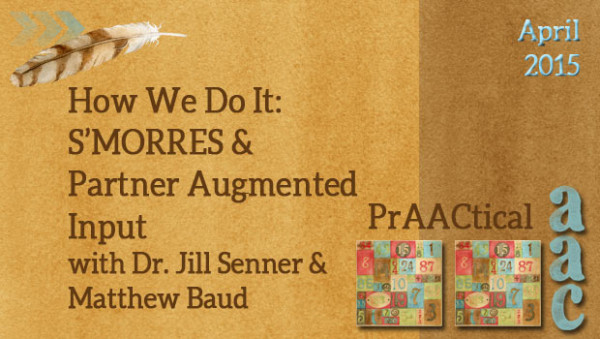
Mnemonics are such a great memory aid, so when Dr. Jill Senner and Matthew Baud offered to share the visual support that they use in their clinical work, I knew it would be of interest to many of you. 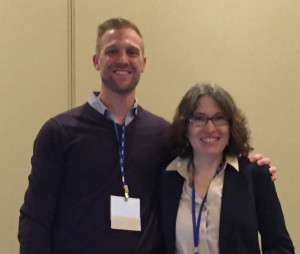 Combine that with content on partner training, and we have a real treat for you: S’MORRES. Dr. Senner is the owner of Technology and Language Center where she specializes in providing AAC and AT services including assessment, consultation and training, and workshops/lectures. She has presented at numerous national AT conferences and has taught graduate courses in AAC and swallowing disorders. Matthew Baud is the Assistive Technology Coordinator at Niles Township District for Special Education, performing evaluations, trainings and coaching communication partners. Matthew also has his own AAC private practice, and is an adjunct professor at Saint Xavier University where he teaches a graduate course in AAC. In this post, they share S’MoRRES, a strategy for building partner interaction skills. You can download the visual support poster here or in the Downloads section of the AAC eToolbox
Combine that with content on partner training, and we have a real treat for you: S’MORRES. Dr. Senner is the owner of Technology and Language Center where she specializes in providing AAC and AT services including assessment, consultation and training, and workshops/lectures. She has presented at numerous national AT conferences and has taught graduate courses in AAC and swallowing disorders. Matthew Baud is the Assistive Technology Coordinator at Niles Township District for Special Education, performing evaluations, trainings and coaching communication partners. Matthew also has his own AAC private practice, and is an adjunct professor at Saint Xavier University where he teaches a graduate course in AAC. In this post, they share S’MoRRES, a strategy for building partner interaction skills. You can download the visual support poster here or in the Downloads section of the AAC eToolbox
——————————–
Partner Augmented Input also known as Aided language input is a powerful, evidence-based approach in which communication partners point to the symbols on the child’s communication board or device while simultaneously talking. One strategy we have used to help classroom staff remember the steps to successful modeling is Verbal Practice of Strategy Steps (Kent-Walsh & McNaughton, 2005). This involves naming and describing all required steps out loud.
Just as you may have used a mnemonic to help remember the planets or perhaps the cranial nerves, we use the S’MORRES (yes, with two r’s) mnemonic to help school staff remember the steps for providing partner augmented input. You can also download this handy poster to hang in the classroom that outlines the steps below:
S Slow Rate – Slow speech rate. Speak in slow, clearly articulated manner.
MO Model – Say words/phrases that are related to the contextual information available while pointing to pictures on the child’s board or device. Parallel talk (i.e., describing what the student is doing as he or she is doing it) and self talk (i.e., talking about what you’re doing as you’re doing it) are helpful tools for modeling. Think 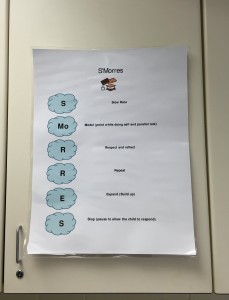 about modeling as providing the color commentary for ongoing classroom activities.
about modeling as providing the color commentary for ongoing classroom activities.
R Respect and Reflect – Provide the words to code the child’s wants, feelings, and intended messages. When the child communicates something through gesture or word approximation, model a word or phrase to communicate the same thought or feeling without making the child repeat him or herself. For example, if the child points to a water fountain, the adult might generate “DRINK. WANT DRINK.”
R Repeat – Frequently repeat utterances.
E Expand – Repeat and rephrase, building upon your own single word utterances by adding one to two words to provide a more complete phrase or sentence. You can build upon the child’s communication as well (i.e., if he/she use one word or symbol such as “BUBBLE” try expanding the comment to two words, for example, “Yes, that’s a BIG BUBBLE.”)
S Stop – Provide an expectant pause to allow the child time to respond.
We wholeheartedly embrace multimodal learning, so of course we suggest making s’mores to help complete the learning experience.
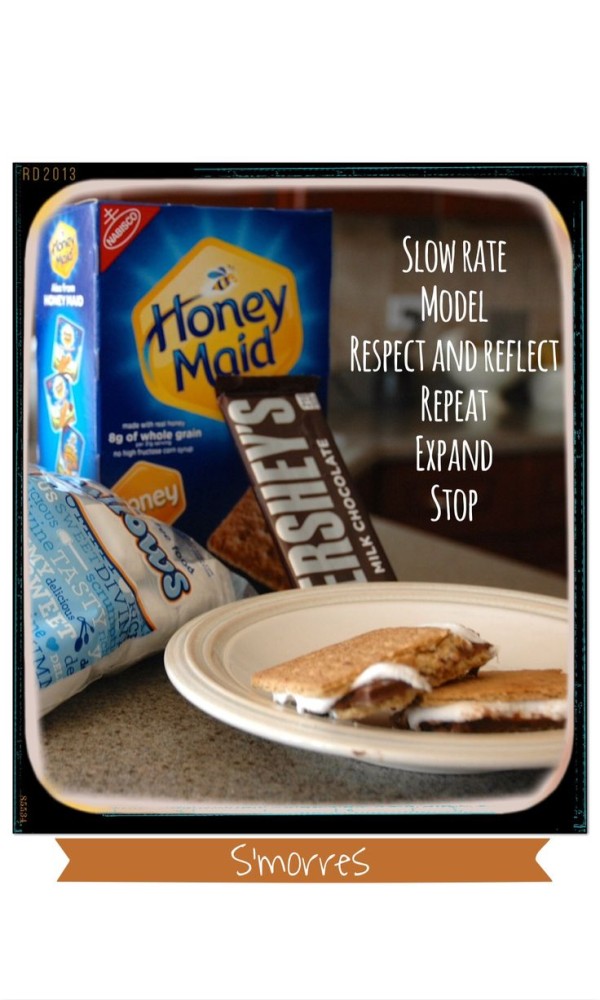
References
Kent-Walsh, J. & McNaughton, D. (2005). Communication partner instruction in AAC: Present practices and future directions. Augmentative and Alternative Communication, 21, 195-204.
Contact Information:
Jill E Senner, PhD, CCC-SLP, Owner and Director of Technology and Language Center, Inc. talcaac@gmail.com
Matthew R. Baud, MS, CCC-SLP, Assistive Technology Coordinator, Niles Township District for Special Education; Mbaud12@gmail.com; @mbaud12(Twitter)
Filed under: PrAACtical Thinking
Tagged With: aided language input, implementation ideas, Jill Senner, Matt Baud, partner strategies, partner training
This post was written by Carole Zangari

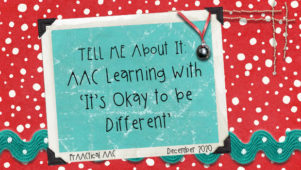
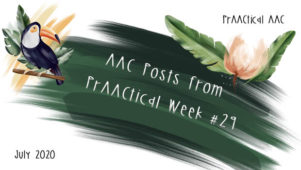
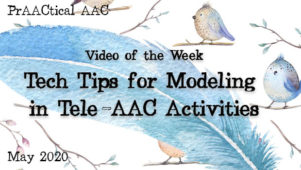
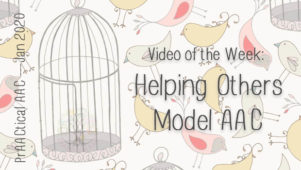
1 Comment
Hello!
As an SLP working for a school board, I loved this post! Dr Senner and Matthew Baud really nailed the key elements we need to focus on when teaching adult partners Aided Language Stimulation, and made it fun with their imaginative mnemonic.
I was so inspired by the poster and summary of the key points that I took a stab at creating my own handout – I thought it might serve as a helpful companion to the poster, which I plan to share with the schools I serve.
However, I’m not sure how these things work…now I’m wondering if would be OK for me to share copies of this handout with the school teams (eg have I credited my sources properly? Should I contact Dr Senner and Mr Baud first?)
Thought you might have some feedback!
Below is a link to the handout, if you’d like to take a look at it (please let me know if you have any trouble viewing it).
Thanks again!
https://db.tt/pVz354HU